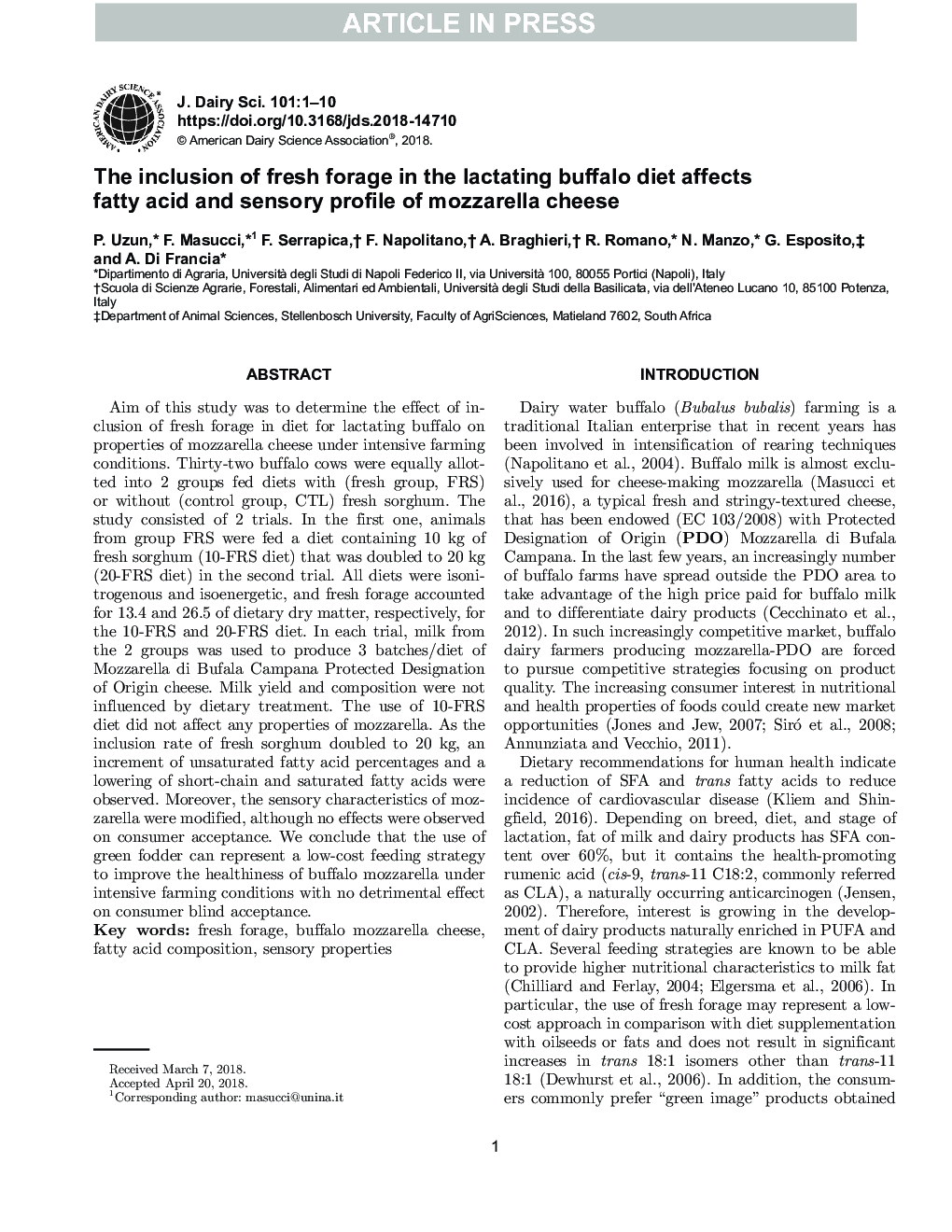| Article ID | Journal | Published Year | Pages | File Type |
|---|---|---|---|---|
| 8500847 | Journal of Dairy Science | 2018 | 10 Pages |
Abstract
The aim of this study was to determine the effect of inclusion of fresh forage in diet for lactating buffalo on properties of mozzarella cheese under intensive farming conditions. Thirty-two buffalo cows were equally allotted into 2 groups fed diets with (fresh group, FRS) or without (control group, CTL) fresh sorghum. The study consisted of 2 trials. In the first one, animals from group FRS were fed a diet containing 10 kg of fresh sorghum (10-FRS diet) that was doubled to 20 kg (20-FRS diet) in the second trial. All diets were isonitrogenous and isoenergetic, and fresh forage accounted for 13.4 and 26.5 of dietary dry matter, respectively, for the 10-FRS and 20-FRS diet. In each trial, milk from the 2 groups was used to produce 3 batches/diet of Mozzarella di Bufala Campana Protected Designation of Origin cheese. Milk yield and composition were not influenced by dietary treatment. The use of 10-FRS diet did not affect any properties of mozzarella. As the inclusion rate of fresh sorghum doubled to 20 kg, an increment of unsaturated fatty acid percentages and a lowering of short-chain and saturated fatty acids were observed. Moreover, the sensory characteristics of mozzarella were modified, although no effects were observed on consumer acceptance. We conclude that the use of green fodder can represent a low-cost feeding strategy to improve the healthiness of buffalo mozzarella under intensive farming conditions with no detrimental effect on consumer blind acceptance.
Related Topics
Life Sciences
Agricultural and Biological Sciences
Animal Science and Zoology
Authors
P. Uzun, F. Masucci, F. Serrapica, F. Napolitano, A. Braghieri, R. Romano, N. Manzo, G. Esposito, A. Di Francia,
